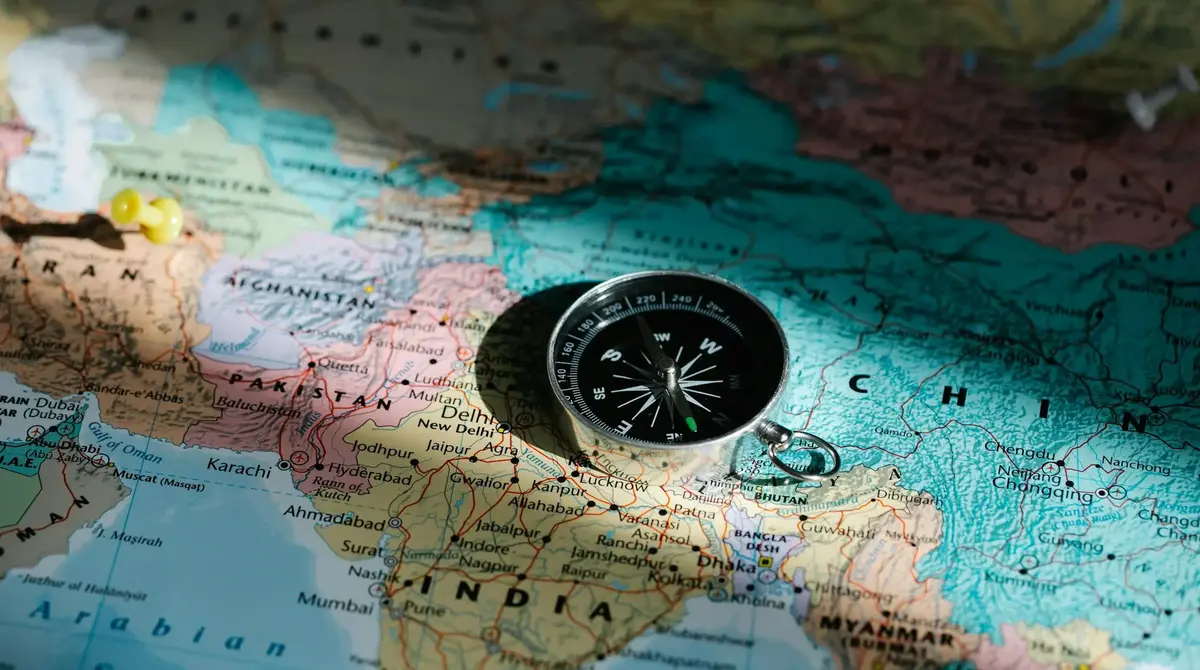
Bhutan, nestled on the southern slope of the eastern Himalayas, is a landlocked nation bereft of its own direct seaports. Nevertheless, it has managed to carve out a pathway to the global market by leveraging the ports of its neighboring countries. Here's an in-depth look at how this is achieved:
Conducting Trade through Indian Ports
Port of Kolkata:
Geographical Location and Significance: Situated in the Ganges Delta in eastern India, bordering the Bay of Bengal, it stands as a linchpin in India's port infrastructure. For Bhutan, the Port of Kolkata is an indispensable conduit for international trade. Its proximity to Bhutan, combined with a relatively well-connected transportation network, makes it a prime choice. WanHao, a prominent player in the global logistics arena, offers a gamut of services such as Ocean FCL and Ocean LCL for shipments between Bhutan and this port. When transporting bulky equipment related to Bhutan's hydropower projects, Ocean FCL emerges as the optimal solution, ensuring the goods are safeguarded during transit. In contrast, for smaller consignments of Bhutan's exquisite handicrafts, Ocean LCL proves cost-effective. The quote for these services is contingent upon multiple factors, including the nature of the goods, volume, and the distance to be covered. Additionally, in cases of exigency, Air freight can be expedited, albeit at a steeper cost.
Transportation Connectivity: A road network serves as the umbilical cord linking Bhutan and India. Goods from Bhutan can be seamlessly ferried to the Port of Kolkata via roads and subsequently dispatched across the globe. The port flaunts comprehensive wharf amenities, a plethora of berths, and cutting-edge loading and unloading apparatus, capable of accommodating a diverse range of cargo. Be it export-oriented characteristic handicrafts, industrial manufactured wares for import, or essential daily necessities, all can be efficiently loaded or unloaded here.
Trade Volume and Ramifications: A substantial portion of Bhutan's exports, from hydropower equipment to unique handicrafts, traverse through the Port of Kolkata to reach international shores. Simultaneously, a multitude of imported commodities, vital for Bhutan's economic and social fabric, make their ingress into the country via this port. It thus plays a cardinal role in buttressing Bhutan's economic growth, satiating domestic demands, and facilitating its integration into the regional and global trade ecosystems.
Haldia Port:
Fundamental Profile: Also located in eastern India, Haldia Port is a bastion of industrial activity and a major transshipment hub for petrochemical products in India. Despite being relatively less prominent in Bhutan's trade compared to Kolkata, it still offers a viable alternative, especially for specific cargo requirements.
Cargo Transportation Traits: Specializing in the handling of petroleum, chemical products, and a gamut of bulk commodities, Haldia Port caters to Bhutan's sporadic needs in these domains. For instance, when Bhutan procures chemical raw materials for its nascent industrial undertakings, Haldia Port can be enlisted for transshipment. WanHao's Ocean Freight services can be harnessed for such shipments, with the quote being calibrated based on parameters like quantity, hazard classification, and transportation distance.
Role in Bhutan's Trade Tapestry: Although the trade volume routed through Haldia Port is comparatively modest, it augments Bhutan's trade options, especially in the realm of specialized cargo. It acts as a supplementary artery, optimizing Bhutan's trade transportation matrix and endowing it with greater flexibility in sourcing and exporting specific goods.
Conducting Trade through Bangladeshi Ports
Port of Chittagong:
Geographical Advantage: Positioned in the southeastern expanse of Bangladesh, abutting the Bay of Bengal, it reigns as the largest seaport in Bangladesh and a key trade hub in South Asia. Despite the relatively longer distance from Bhutan compared to Indian ports, viable transportation corridors exist to ensure seamless cargo connectivity.
Trade Dynamics: A segment of Bhutan's merchandise, notably characteristic agricultural produce and handicrafts, embarks on a terrestrial journey to Bangladesh and then transits to the Port of Chittagong for overseas shipment. Conversely, imported goods such as advanced agricultural machinery and construction materials can ingress Bangladesh via this port and then be transported to Bhutan. WanHao extends comprehensive logistics solutions, encompassing Ocean FCL, Ocean LCL, and Ocean Feight services. To obtain an accurate quote, detailed cargo particulars like type, volume, and destination need to be furnished.
Importance for Bhutan's Trade Expansion: The Port of Chittagong acts as a springboard for Bhutan to amplify its trade footprint. It empowers Bhutan to fortify trade alliances with other Asian nations and global regions, diversify its trade partners, and showcase its unique products on a broader international stage. Simultaneously, it enables Bhutan to access a wider array of high-quality imports, thereby catalyzing the development of diverse industries within the country.
In sum, despite its landlocked status, Bhutan has adroitly harnessed the port facilities of its neighbors, India and Bangladesh. Through meticulous cooperation and the establishment of efficient transportation linkages, it has not only navigated the challenges of landlocked-ness but has also charted a course for sustained economic growth and enhanced global trade integration.

 Easy Shipping From Global, Save Cost
Easy Shipping From Global, Save Cost










